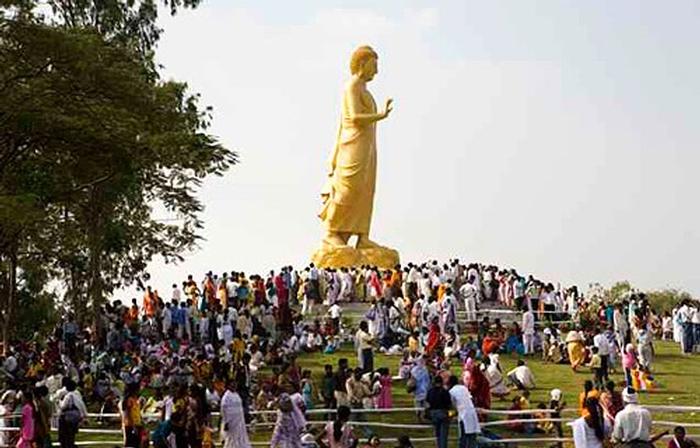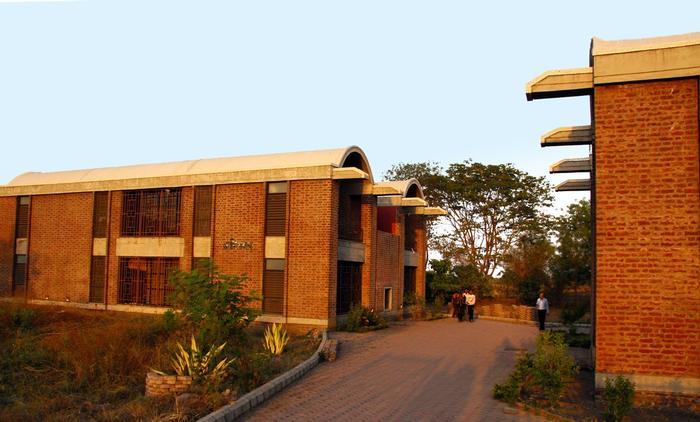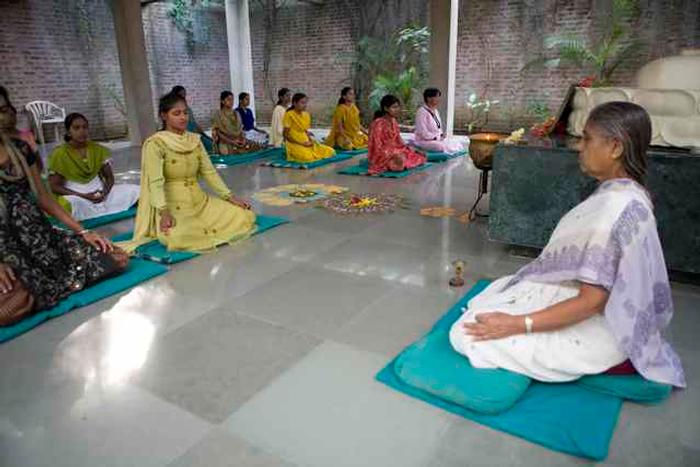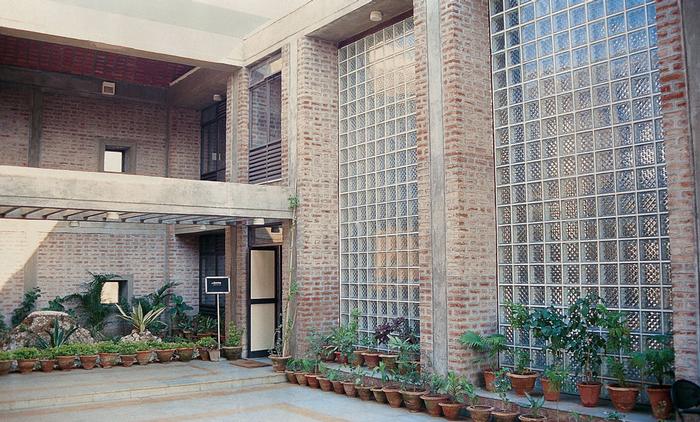[ID:2396] THE LIFE OF UNTOUCHABLE: an honest depiction...India LIFE OF AN UNTOUCHABLE: an honest depiction “The white canvas of the seat was stained in pale yellow and the sprays of red betel leaves made a graffiti on the fresh colored walls. At another end, termites were having their own march of freedom along the skirting of the wall... As the liberty bells would toll every afternoon, a ruckus of happy, and shouting children would flee back home, leaving myself and a couple more of my likes behind to make the march of our lives. Shackled in the chains of our caste, we would slog towards our destiny: cleaning of the stinking box; our school toilet. For in a free and liberal world like ours, the lower caste did not deserve to have a human life and that was the lesson we were made to learn more than math or science for being the children of the lower caste. We belonged to the toilet not to the classroom and it was deemed our duty to clean those toilets, as such chores were not meant for the upper caste children. Consequently, we would scrub them clean everyday, clearing the canvas to be re-painted the next day." ~Bhante Sugato, resident of Nagaloka
In order to comprehend the above scenario, we wanted to have an understanding of the happenings, both social and cultural that were taking place within the community.
THE TALE UNTOLD As the British sun finally set upon India, a different battle began in the dusk of uncertainty. Identity restoration became a major uproar for every community. At the northern frontier, the Sikhs demanded a separate country entitled Khalistan, down South majority of Hindus were converting to Christianity, the Muslim communities were going through altogether a different crisis after the separation of India and Pakistan. The loudest call however, was that of the minority communities; the most oppressed, the most deprived and least facilitated for the rights to human dignity and the bare minimum for human endurance, the concept of untouchability being the major cause of turbulence in their lives. A majority of Indian population comprised of these minor communities, majority of whom being under the poverty line at that time, worked as landless labourers in the fields of higher caste Hindus. Almost 60% of these communities of oppressed and outcast groups and tribes, collectively known as Dalits (Sanskrit for oppressed and untouchables) lacked access to even basic amenities mandatory for living. The oppression was not just limited to social and economic conditions. Caste based violence was widely prevalent and casualties were countless. Dalit women being kidnapped and raped was not a matter of grave concern and being burned alive was a part of life. Such was the scenario in the mid 20th century. Meanwhile, Central India, especially Nagpur witnessed various historic events due to its strategic location. Located at the heart of the country since its emergence meant that a myriad of rulers left their mark on the city, making it a melting pot of various cultures and ethnicities. This conversely, led to an inter-community war for superiority as well as for creating an identity for self. Public gathering and socializing thereby became a question mark for many.
It was Dr. B. R. Ambedkar, a fierce advocate for Dalit rights and Chief Architect of the Indian constitution, who took on his shoulders the task of securing social harmony and an equal play field for the Dalits through introduction to Buddhism. Also belonging to a minority community, Babasaheb Ambedkar had faced various kinds of discrimination throughout his lifetime. He described his childhood humiliation in one of his speeches for equality as, “I could not touch the tap and unless it was opened by a touchable person, it was not possible for me to quench my thirst. The presence of the school peon was necessary, for he was the only person whom the class teacher could use for such a purpose. If the peon was not available, I had to go without water — no peon, no water.”
Having faced such adversities himself, Babasaheb Ambedkar became a key figure in the creation of modern India. He, along with 4,00,000 Dalit brothers and sisters formally converted to Buddhism on this very land of Nagpur thus breaking the shackles of the Hindu caste system in the very heart of the country. This led to a wave against injustice that surged in every direction, intent on liberating India of the evils of the caste system. His initiative to find justice outside the folds of Hinduism by abolishing social and economic inequality marked a significant event in the city's history. To commemorate this very event, millions of followers converge every year from different parts of the country to the very place where they were recognized as 'equals', the land of the Nag river, Nagpur.
This has led to establishment of major Buddhist communities in Nagpur, whose importance and principles were consequently recognized by other social groups as well. During the dawn of the 21st century, Dharmachari Lokamitra and few other devout followers of Dr. Ambedkar had a dream to build a space for the people of Buddha in Nagpur; the womb of this movement. This new wave of ideology and growing importance of Buddhism led to the establishment of NAGALOKA; our subject of study.
THE ODYSSEY We commuted several times much the length of the city, from our homes in Central Nagpur, near the railway station to this makeshift retreat centre in the outskirts of the city. Along that drive, the extremes of noise and clutter seemed to resonate with paradoxical peaceful and quiet. As we left behind this energetic yet calm, lively yet peaceful city of Nagpur, we found ourselves in the tranquil abode; Nagaloka. Spread over 14-acres, this sacred precinct is a Buddhist education, training and research centre created with the intent to impart development skills to its pupils, help them socialize and above all build a stairway towards the achievement of collective enlightenment. Nagaloka was thus established to take forward Dr. Ambedkar's dream of a socially equal India. As one enters this sacred locale, one is greeted by a warm waft of liberty and equality. The first sight is that of a grand avenue comprising of a shaded pathway lined with trees on either sides giving one a feeling of solace and calm. Tiny human figures are visible from the distance, each taking benefit of the colossal green corridor. Upon further stretching our gaze , we are met with the soothing spectacle of the lush green lawns on the periphery of the central avenue where the residents of Nagaloka as well as visitors can be seen relaxing and basking in the afternoon sun. On walking further down the long circular pathway, one can immediately feel lost for direction. However, the need for orientation is soon replaced by a sense of admiration as we encounter a monumental 56 feet high statue of Lord Buddha, the founder of Buddhism, established there in order to commemorate His role in leading many to spiritual enlightenment. Strategically placed along the central axis, the statue shimmers in gold, perfectly recreating His aura. Standing upon on this slightly raised platform where holy rituals are performed every year to commemorate the 1956 historic event, one cannot help but feel a strong sense of devotion. This unstructured gathering space under the thick canopy serves as an inclusive room to worship the Lord, assimilating every child of Buddha who wishes to worship Him irrespective of caste, creed, race and gender. [1] "Firstly, I would relate how I felt liberation from suffering after coming to Nagaloka. The greatest change I experienced since my arrival is that people no longer looked at me as an outcast. No one here prohibits me from doing anything simply based on my caste. I never realized how immense a difference it would make. I had suffered from an unconscious inferiority complex due to the constant reminding of my low caste status. I was always treated lower than animals. I was constantly ex-communicated from the rest of the society due to my low birth never realizing that, as Babasaheb Ambedkar puts it,” It is only a notion of mind.“" ~Deepak Dhammadarshi, resident of Nagaloka
The designing of the campus began in 1996, the principle architect being Christopher Benninger, who tried to keep the disciplines of Buddhism alive by creating a beautiful, intimate companionship through spaces. The work continued till 2008 whereas certain modifications are still being made as per the students' requirements.
The entire campus consists of exposed brick structures imparting a sense of simplicity and portraying the idea of harmonizing with and revealing oneself to the outside world. Extensive use of vaults is another typical feature of the campus. This helps the admission of maximum daylight, thereby creating well burnished interior spaces. [2]
The completed campus includes a dhamma hall, the Nagarjuna training institute, a meditation pavilion, a library, a dharmashala (comprising of a kitchen and resthouse for the visitors), an administration building and various smaller multi-purpose areas for the monks' communities as well as the visitors. All these are set around a large open space, centered around the statue of Lord Buddha.
Melodious music can be heard from a distance, which upon walking further, imparts onto the hall and all its occupants, a sense of quiet serenity. The entire hall seems to resonate with the intense deep notes of the veena in stark contrast to the soft interplay of the flute. Being the main public meeting and praying hall, the dhamma hall is used for discourses and gatherings. Hollow exposed brick bearing walls, enclose its three sides with the fourth side consisting of blue glass folding doors opening onto the large entrance pavilion sheltered by a 20 meter long shell. In the cool of the evening, families from town gather after work and pay their respects.
Since 2002, the training institute has been operating a residential Buddhist activist training program for young men and women from all over India. The 8–month program includes meditation and chanting twice a day, education in Lord Buddha’s teachings, social thought, investigation and action. Although today there are over 20 million people who are following the example of Dr. Ambedkar and over 160 million more people who are influenced by his work, there are very few qualified Buddhist teachers. The aim of the institute, therefore is to build individuals along the footsteps of Buddhist teachings and practices, and to inspire them to transform their own lives as well as the lives of masses through the same.
In the age of antiquity, monks often wandered across the Indian subcontinent and often beyond to propagate the wheel of law. As a parallel, the meditation hall is a vihara for the monks. Vihara (in Sanskrit) relates to wandering about or contemplation. To put it in brief, it is a place for retreat and isolation. The meditation pavilion is therefore completely surrounded by a wall, forming an interior court such that it does not reveal itself and completely secludes one from the outside world, free to interact with the inner being. The serenity of the space is further enhanced by the presence of exquisite climbers hanging from the walls of the court, giving one an ethereal feeling ideal for introspection for losing oneself in search of life's hidden truths. This interface between the built and the un-built, the outer and the inner, and the I and the me serves as the perfect setting to discover oneself. [3]
Along a similar ideology, lied the library building, the courtyard being its quintessential feature. Climatic aspect was given significant attention while designing this space. Cavity walls acted as a thermal barrier for the interior space. Externally, the roof was covered with mosaic which reflected the sunlight, thereby keeping the interiors cool. Also, the reading room was twice as high, which provided direct sunlight from the vaulted roof creating a well-lit composed environment within. [4]
The dharmashala was yet another exceptional example in Nagaloka. One of the most informal and lively spaces within the campus, the system was working without any additional support. The residents of Nagaloka themselves worked as cooks, servers, cleaners as well as the owners of the system at the same time. This was presumably done so that everyday chores were distributed among the residual communities, thereby breaking the stereotypical hierarchical distribution of work.
The Nagaloka campus possesses melange of structures such that they cannot be easily distinguished from one another. Further pondering upon this notion, we began our quest for an authoritative structure; the administration building in order to further inquire the campus and its activities. However, to our consternation, we observed a complete and conspicuous absence of any sort of hierarchy among the buildings within the campus. On drawing a parallel, this justifies the vision of Nagaloka, to create a society based on the principles of equality and fraternity. Consequently, the structures within the campus looked similar with no distinct identity but one, thereby perfectly reflecting the ideologies of Dr. Ambedkar.
THE CONCLUSION Despite the challenges of poverty and continuing certainty of caste subjugation, they come here to blossom in an atmosphere of friendship, dharma and critical thinking. It is gratifying to see them blossoming, making plans of higher education and setting goals to serve the society at home by providing social services.
The residents of Nagaloka have done commendable work over the past thirty years, bringing dhamma to the poorest of the poor by creating a place beyond prejudice of caste and creed. In our world, often perceived deeply fractured and doused hate, examples of such fraternity can serve as a beacon of hope; and the world does sorely need hope, in the tumultuous times that lie ahead.
The one thing we would like to take from this project is its ability to surpass all the social stigmas about casteism and truly withstand as a solution to eradicate the social issues, thereby presenting an ideal model of freedom and equality among the prejudice intellects, through piece of architecture. The way Architect Christopher Benninger tried to mould in the culture, the people and their thoughts into architecture made this project a thriving one that helped its inhabitants, the surviving champions to get their thoughts cleared after experiencing the earlier daunting life not just physically but also psychologically. The spaces helped them build up confidence and socialize, surpassing their inferiority complexes such that they represent themselves in this myriad world of challenges with dignity and respect.
"I am liberated from the shadows of my past, which always haunted me telling that I am not a worthy person. Nagaloka gave me this new identity of a normal human being." ~Resident of Nagalok
When we speak of dreams, the name of a man springs to the forefront of the mind, a man behind whose dream rallied an entire nation, in an unparalleled civil right movement. Truly, it is impossible to talk about discrimination, without remembering his words,
“Darkness cannot drive out darkness; only light can do that. Hate cannot drive out hate; only love can do that.” ~Martin Luther King, Jr. And God said, “Let there be light.”
The last line is a reference to the Bible... Genesis 1:3...
If you would like to contact this author, please send a request to info@berkeleyprize.org. |




